#contextualclass
Explore tagged Tumblr posts
Text
PHOTOJOURNALISM
What are six things photojournalism does?
Tells a story
Captures an important moment.
Photographic evidence? context.
Promote social change and ideas.
Record of historical events.
Convey feeling/emotion.
What are six genres you would shoot as a photojournalist?
War.
Politics.
Poverty.
Animal abuse / conservation.
Protest.
Natural disasters.
What skills are needed to be a photojournalist?
Quick on your feet - prepared.
Not emotionally invested in situations.
Pragmatism.
Flexibility.
Patience.
Good timing.
Confidence / people skills.
What elements define ethics in photojournalism?
Photo-manipulation.
Correct captioning / non-contextual representation.
Singular focus on negative elements.
Interpretation.
Truth telling.
Misrepresentation.
Dignity - particularly when working on foreign commissions / projects / news stories.
Intervention.
2 notes
·
View notes
Text
Paper Movies task
1) When the 1950s ended this became the “golden age” of photography and three decades after that because this was when colour photography was getting used a lot more and became a photographer’s standard instead of black and white. Another thing that happened in this time was that photographers wanted to explore the world more and see what it looked like through a camera.
2) Joel Sternfeld’s equipment looks kind of a like a 10x8 film camera with a tripod he could possibly be using this for bigger film size and better quality in the image.
3) Robert Frank brought an outsider’s perspective as he began a 9-month road trip around America. In the book itself he wanted you to take each picture in on their own and not have others in the way
4) His attitude to photography is as they say “is always on the offensive” he wants to be aggressive to provoke a situation. Even In the interview they had with him he was blunt, quick comebacks and honest.
5) The reason why Joel Meyerowitz rejected Henri Cartier-Bressons decisive moment because New York and Paris are entirely different places so they will need to change the style of each place
6) Tony Ray Jones had key pointers about being a Successful Street photographer and they are –
Be more aggressive
Get more involved by talking to people
Stay with the subject matter by being patient
Take simpler pictures
Don’t take boring pictures
Get in closer
7) British photographers have gravitated to the beach as an ideal location because the subject matter would show certain things like family drama and dreams of love that they wouldn’t normally show anywhere else.
8) With the saying “surface rather than soul” I think it means that you see it for what it is then learning more about what it’s like or what it can do
9) Observations from the road trips from -
This projects shows America in the 60s/70s
In that time, it was shocking to see colour photographs because people didn’t do them then, they all did black and white because it was the normal
10)William Eggleston is regarded as “King” because he showed that colour photography could be used as a form of art
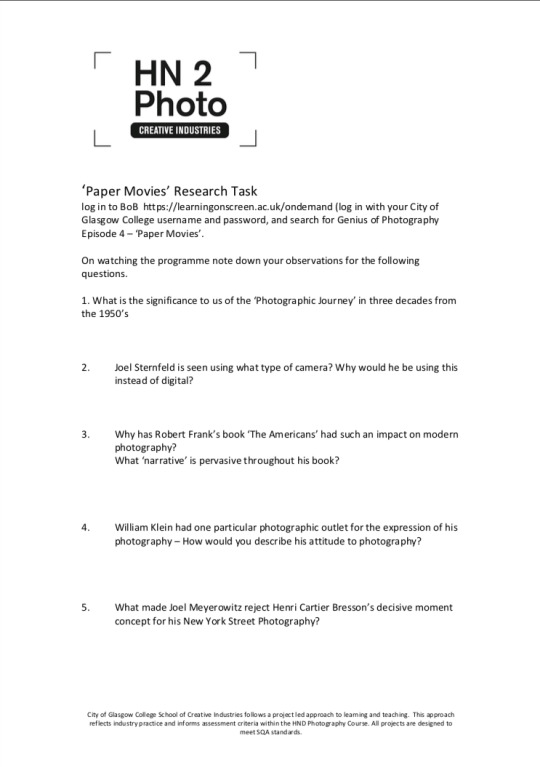
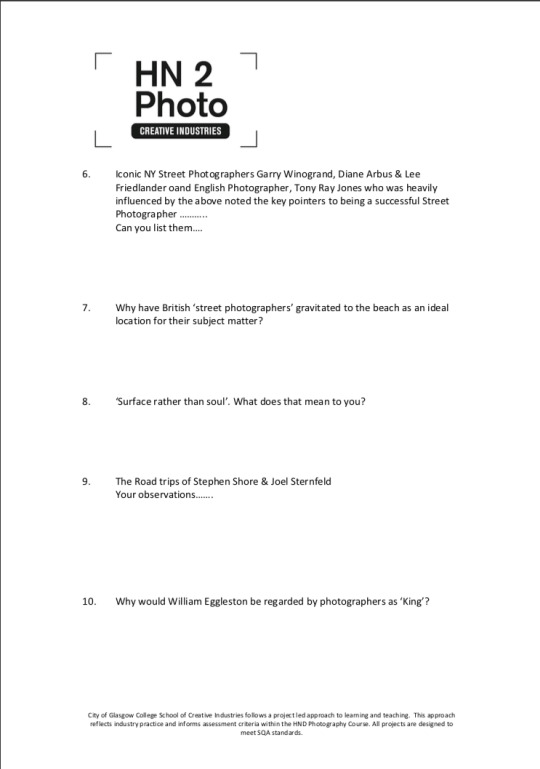
0 notes
Link
2 notes
·
View notes
Photo
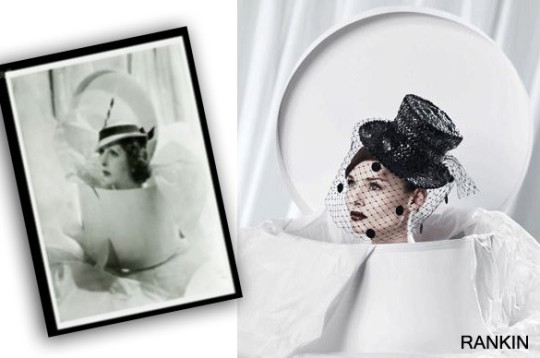

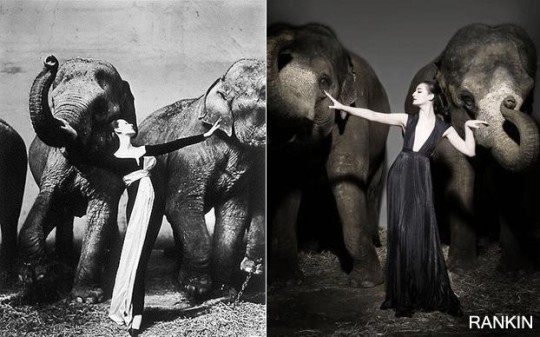

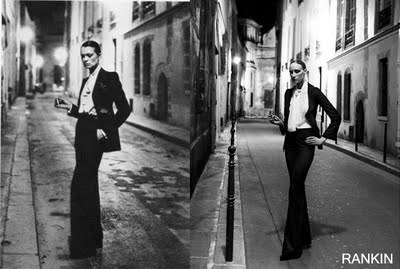
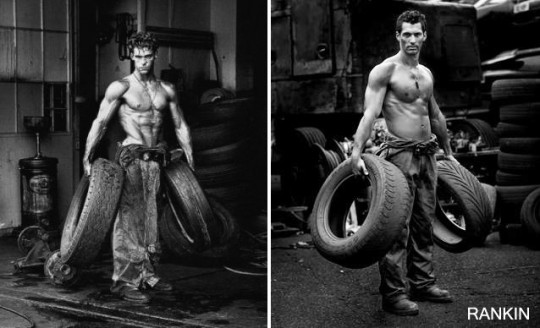

FASHION PRESENTATION
Rankin | Seven Photographs That Changed The Fashion World
In this class, we watched a video about the photographer known as Rankin. In this video, Rankin looked at seven photographs which changed the fashion world and successfully recreated them with his own models and equipment.
The first image is from photographer Cecil Beaton. Rankin recreated the 1934 photo from Vogue of the white Panama hat. "Beaton brought to it his typical wit and elegance so that what she is wearing is secondary to the beauty of the image." Rankin had help from pop star and model, Sophie Ellis Bextor as his model as she was perfect for the 1930s and 1940s look.
Second Image - Erwin Blumenfeld, 1950s Vogue. "Blumenfield was all about visual experimentation. He was an innovative fashion photographer of his era and a pioneer for colour photography. His stunning Vogue cover in 1950 shows the influence of the surrealist but also shows the excitement of the country looking forward to the next century," Heidi Klum was chosen to be the muse for this shoot because of her chameleon tendencies and fame.
Third Image - Richard Avedon, 1955, "Dovima With Elephants". "Classic styling with energy and creative spirit. Daring, stylish and ambitious, his pictures reflected the optimism of 50s America and turned him into the first celebrity fashion photographer. His status was confirmed by Funny Face, a film based on Avedon but was was made famous for starring Audrey Hepburn and Fred Astaire. His photo of a model with elephants that was in Harpers Bazaar in 1955.” Rankin chose supermodel Erin O'Connor for this recreation because of her tall and thin figure.
Fourth Image - David Bailey, 1963, Jean Shrimpton. "Before Bailey, fashion photography in Britain was still a gentleman's trade however he broke through all that bringing an energy, charm and incredible life to his images. Bailey is the perfect fashion photographer combining technical brilliance with sheer force of personality to create photos that have a sense of total spontaneity. He created some of the most iconic images of the 60s and most of them were with his muse and girlfriend, Jean Shrimpton.” Rankin chose to recreate the image from Vogue in 1963 with his own girlfriend, Tuuli Shipster.
Fifth Image - Helmut Newton, 1975, "Le Smoking”, original model. "In the era of sexual liberation, pornography going mainstream and conventions being challenged; Newton's voyeuristic images of strong women in often highly charged sexual scenarios often captured the new mood. His pictures also suggested that fashion photographs could be more than just a beautiful snapshot. His images felt like frames from a slightly seedy film and moved fashion photography forward again.” The photo taken for Vogue in 1975 is the one that Rankin recreated with an androgynous and mysterious feel. This was taken in the Rue Aubriot in Paris outside Newton's apartment. Rankin went back to the same street for his shoot and used models, Jade Parfitt and Mollie Gondi.
Sixth Image - Herb Ritts, 1984, "Fred with Tires". "Ritts' work has been described as so dark you can see the shadows and the light. He wanted to make beautiful images with beautiful people and in doing so was responsible for the way men were portrayed in fashion. His image 'Fred With Tyres' which was about workers in denim was shown in Italian Vogue in 1984 and caused quite a stir.” To recreate this image, Rankin used top male model David Gandy who is the face of Dolce and Gabanna.
Seventh Image - Guy Bourdin. "His highly saturated look and dramatic scenario seem to suggest some hidden tension or trauma. His influence is incredible not just in photography but in pop culture.” He chose to recreate Bourdin's 1970 Vogue cover as it captures the sleazy glamour of his work that has none of the admiration of women which is normally seen in traditional fashion photos. He used model and socialite, Daphne Guinness to pose for this shoot.
6 notes
·
View notes
Text
Fashion Presentation
In our contextual class we got to watch a documentary that show the fashion side of photography and how certain photos made a big impact on it. Throughout the documentary we get shown a photographer called Rankin trying to recreate the seven images that became the most significant fashion photographs of the 20thcentury.
Task 1
The seven photographs and photographers are
“White Panama Hat” by Cecil Beaton taken in 1934
Vogue cover taken in January issue of vogue in 1950
“Dovima with Elephants” by Richard Avedon taken in 1955
Jean Shrimpton by David Bailey taken in 1962
Rue Aubriot in Paris by Helmut Newton taken in 1975
Untitled by Guy Bourdin taken in 1970
Fred with Tyres” by Herb Ritts in 1984
Cecil Beaton was an English photographer and also a designer that was alive from 1904 till 1980
Edwin Blumenfeld was a German American fashion photographer that was alive from 1897 till 1969
Richard Avedon was an American fashion and portrait photographer. He was alive from 1923 till 2004
David Bailey is an English fashion and portrait photographer. He was born in 1962 and is still alive
Helmut Newton was a German Australian fashion photographer. He was alive from 1920 till 2004
Guy Bourdin was a French fashion photographer and also an artist. He lived from 1928 till 1991
Herb Ritts was an American fashion photographer and a director. He lived from 1952 till 2002
Task 2
American Beauty clip
The mood and lighting change all of a sudden to where it’s just focusing on the man in the audience and the main cheerleader dancing, showing that he can’t look away from her by having a close up on his eyes. The mood in this clip seems like a normal basketball game all happy and excited for the match and all of a sudden it changes halfway through the clip, where its just two people in the room and it seems like that it’s all happening in the guy’s imagination to where she zips down her top and roses fly out indicating it is his imagination then it snaps back to reality showing the cheerleaders finishing there dance.
The Birds clip
The mood in this clip is quiet and tense as it seems in the classroom they are waiting to see what is happening to where they try to sneak away to safety where it becomes chaotic as they all try to run and scream from the birds attacking them. The lighting in this is normal as it is trying to look like daylight as they are outside
The Shining clip
With this clip the seems creepy and haunting as the camera shows the child go further and further down he hall while the camera just stays put till h child turns the corner and see two girls, flashing between them standing alive to them laying on the floor dead with blood everywhere with the camera jumping back and forth between the girls and the close p of the kid
0 notes
Text
Tabloid/Broadsheet research Task 7
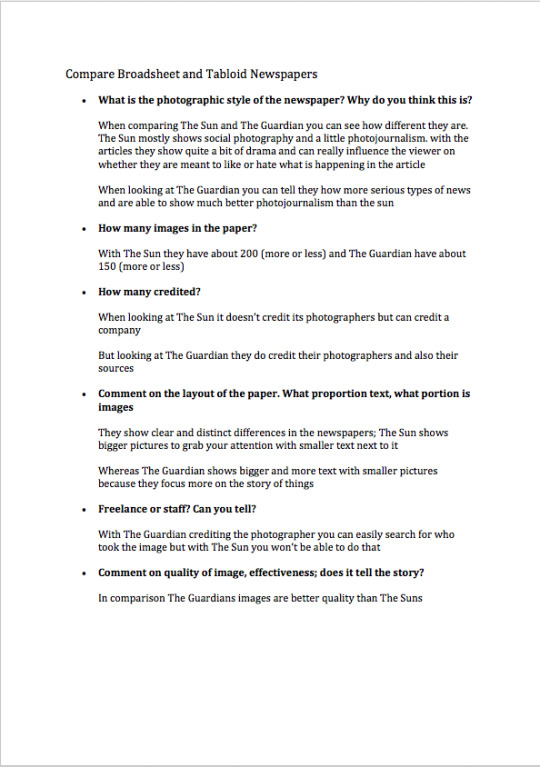
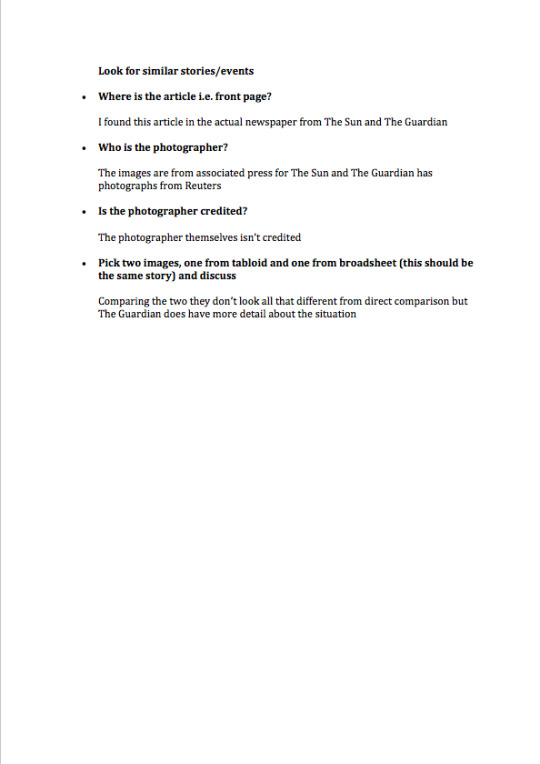
0 notes
Text
Ways Of Seeing
Contextual Class (Task 2)
Task 1 & 2
This is a busy black and white picture
With a lot of people walking in different directions in the image
At the centre of the image is a man on the ground, possibly injured and seems as if as no one has noticed him or even cares
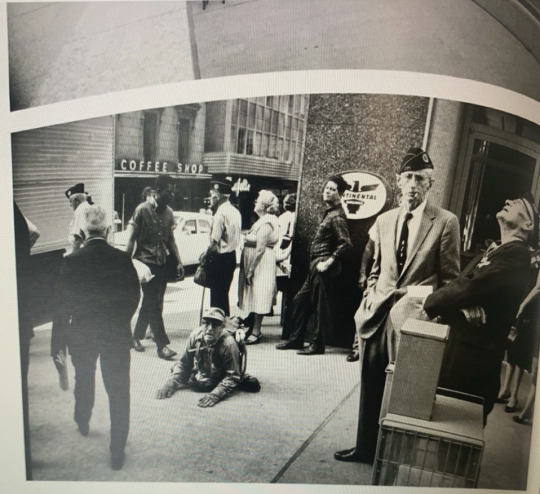
Task 3 & 4
In contextual class we were put into groups and given different books and we had to select one image and say what is happening in the image.
In this image I see a black woman on a chair in a relaxed, possibly sexual pose having a cigarette, she is in some sort of sailor uniform with a necklace made of white beads and has her face painted white.
After doing this task we found that the person in this image is a black Nigerian woman or possibly a trans woman. Also, possibly as sex worker with how she is sitting and her outfit. With her face being painted white we thought that her sexuality is not welcome in her own culture.
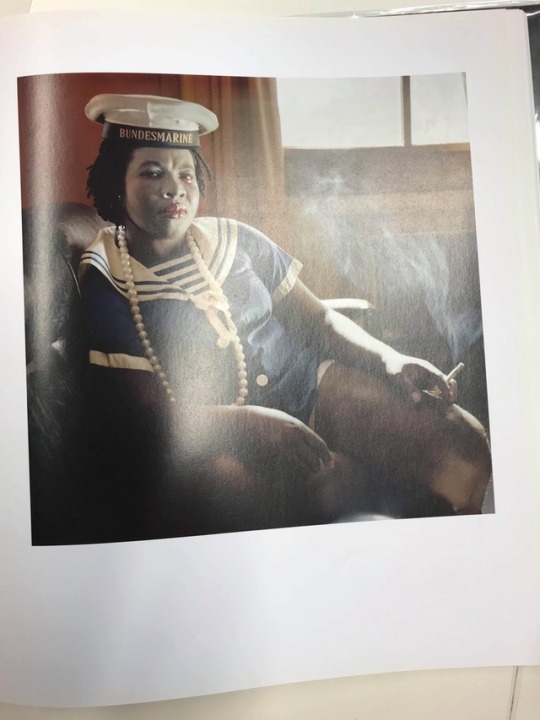
0 notes
Text
Portraiture Research Task 10
In class we got given a list of photographers names and we had to pick two and look at their distinctive styles
Martin Schoelller
o He is known for his unique style of shooting called “hyper-detailed close ups”
o Its his most recognisable work
o His portraits are shot with similar lighting, backdrop and tone
o His photos are a close up of the models head with incredible detail
o Most of his photos are colour but he has shot some in black and white
o The images that he creates seem quite intense due to how close the model is to the camera and how they all look directly into the camera
o The lighting is quite on the model
Rineke Dijkstra
o These images consist of full length shots of a model being in the centre
o Most photos consist of being at the beach with most of the background being the sky
o The sky can either be a nice bright blue or a dark muddy blue
o The models outfit is the thing that stands out in the image and grabs your attention
0 notes
Text
Photojournalism Presentation Task 6
Task 1
· Write down six things that you think Photojournalism does…..
o I think photojournalism can tell a story from a unique perspective
o It tells a visual story
o It can document an event
o It can show what the experience is like without actually being there
o It can change people’s view on the situation
· What will you shoot as a photojournalist?
o As a documentary I would shoot thing s like a protest, a rally. I would document a natural disaster or a war conflict. I could also document sports and press events and even charity work
· Write down six genres you would cover
o Candid
o War
o News
o Politics
o Sports
o Celebrities
· Write down six skills required as a photojournalist.
o As a photojournalist you would need patience, confidence, persistence, flexibility and good timing
· What equipment might you need?
o Mostly just a camera and lens, possibly a flash gun
· What responsibilities might a photojournalist have?
o The responsibilities of a photojournalist will to be well informed and to tell the truth with your work
· Does your job as a human being, outweigh your job as a photojournalist?
o I don’t think it should outweigh from being a human because its just a job another opportunity will always come up but when looking at this type of photography you can see people put photojournalism first
Task 2
5 sources where you see good journalism
o You can see good journalism in places like The Guardian Newspaper, BBC News, National Geographic, The Independent, World Press Photo
0 notes
Text

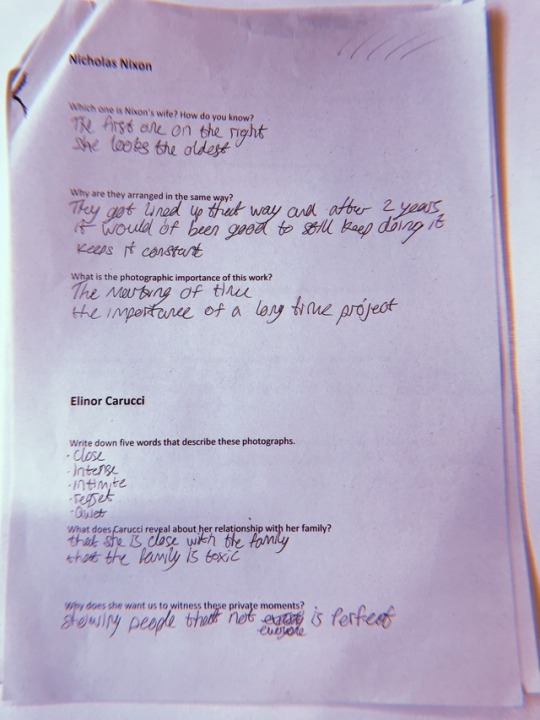
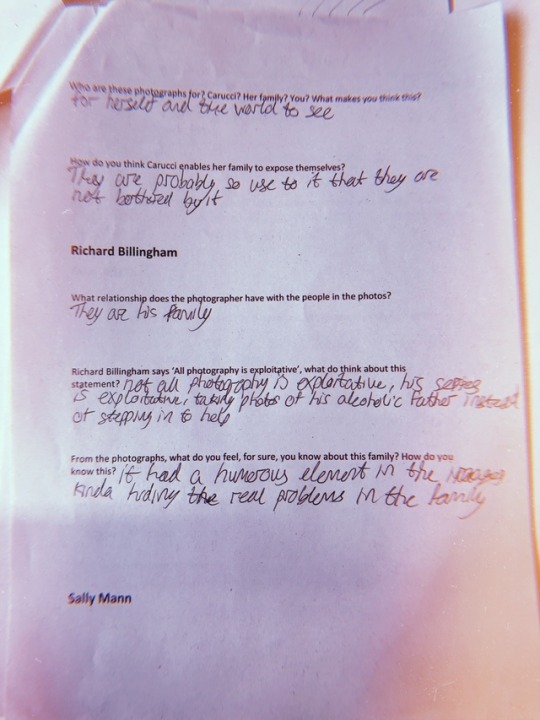

Contextual Class
In class we got to learn about the work of many documentary type photographers
0 notes
Photo
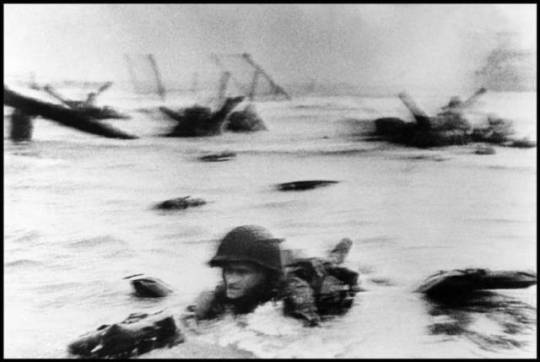
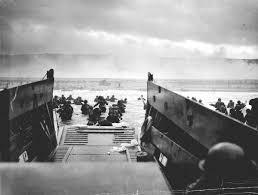

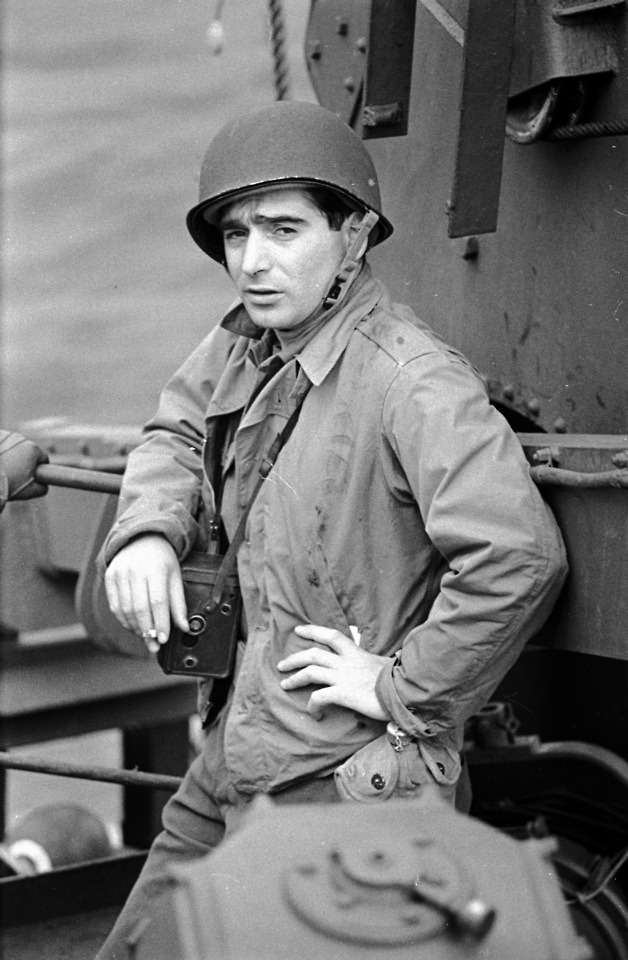
Contextual Photography Task 4
Right Time, Right Place
The photographer I have chosen to talk about is Robert Capa.
Robert Capa was born on October 22, 1913 and died on May 25, 1954 during his life he was a Hungarian war photographer and was a photojournalist. During his photographic career he risked his life countless times to photograph war, on D-Day he was the only civilian photographer that landed on Omaha beach and to some people he is considered to be the greatest combat photographer in history. He has also been awarded the Medal Of Freedom for his work in World War II and in that same year he co-founded Magnum Photos.
0 notes
Photo
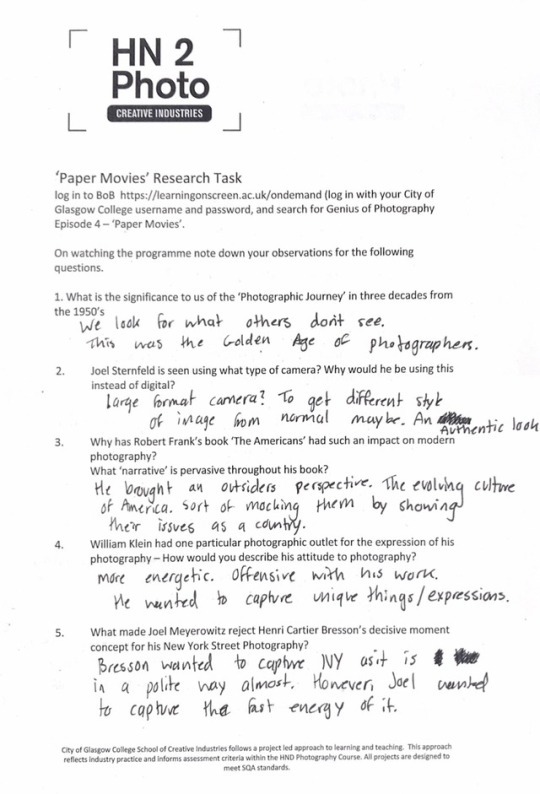
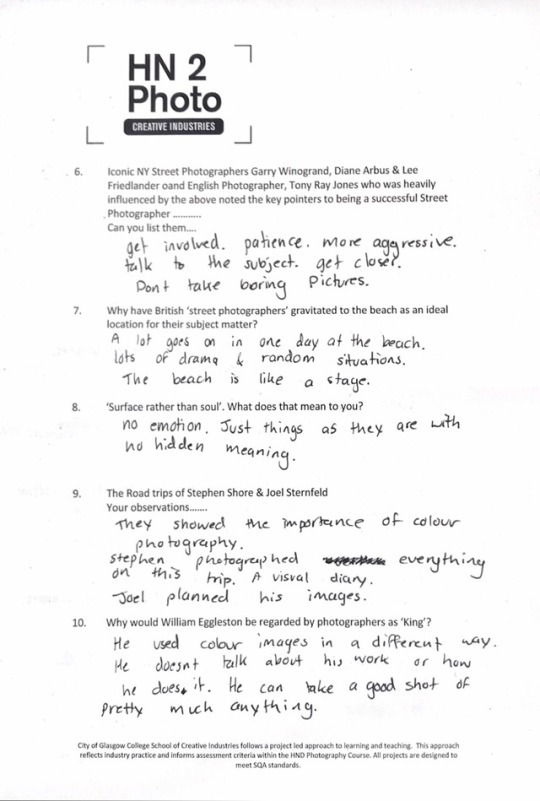
PAPER MOVIES TASK
0 notes
Photo

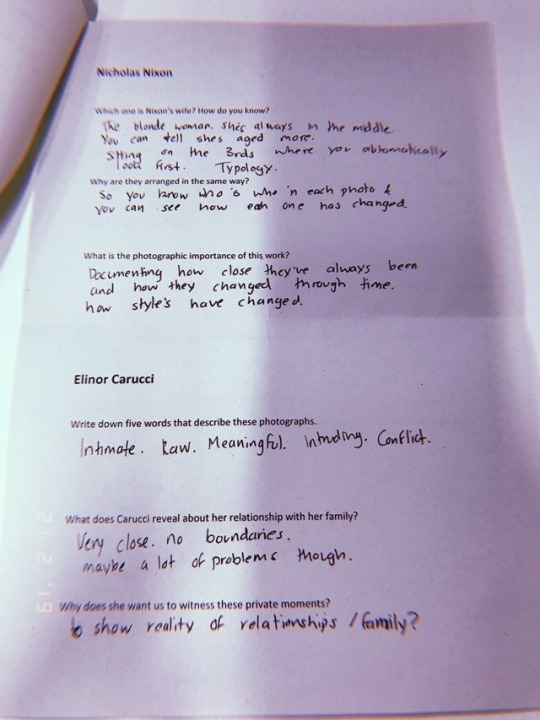
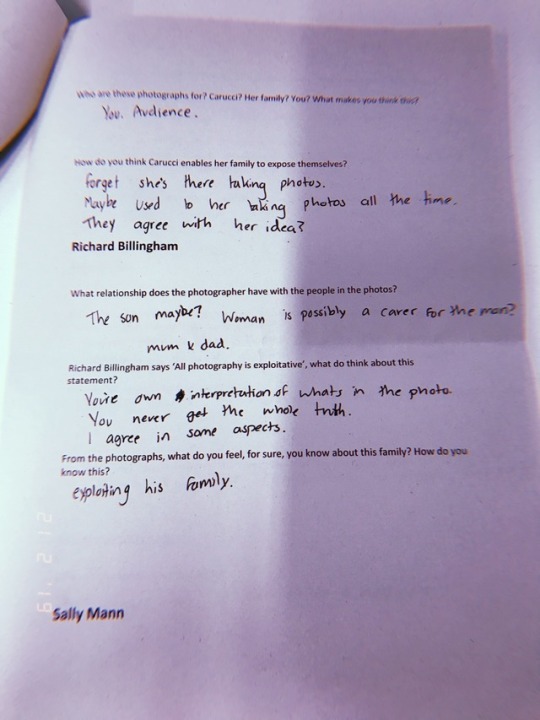
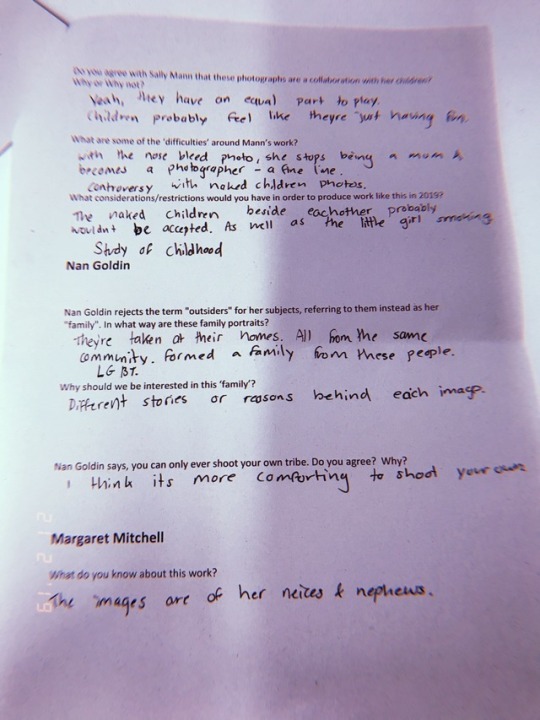
DOCUMENTARY - ‘FAMILY’
In todays class, we were shown a powerpoint that included photos from various different photographers who had created documentary projects on their family’s. We were given a question sheet to fill out which I have included above and we also discussed our opinions on the images.
0 notes